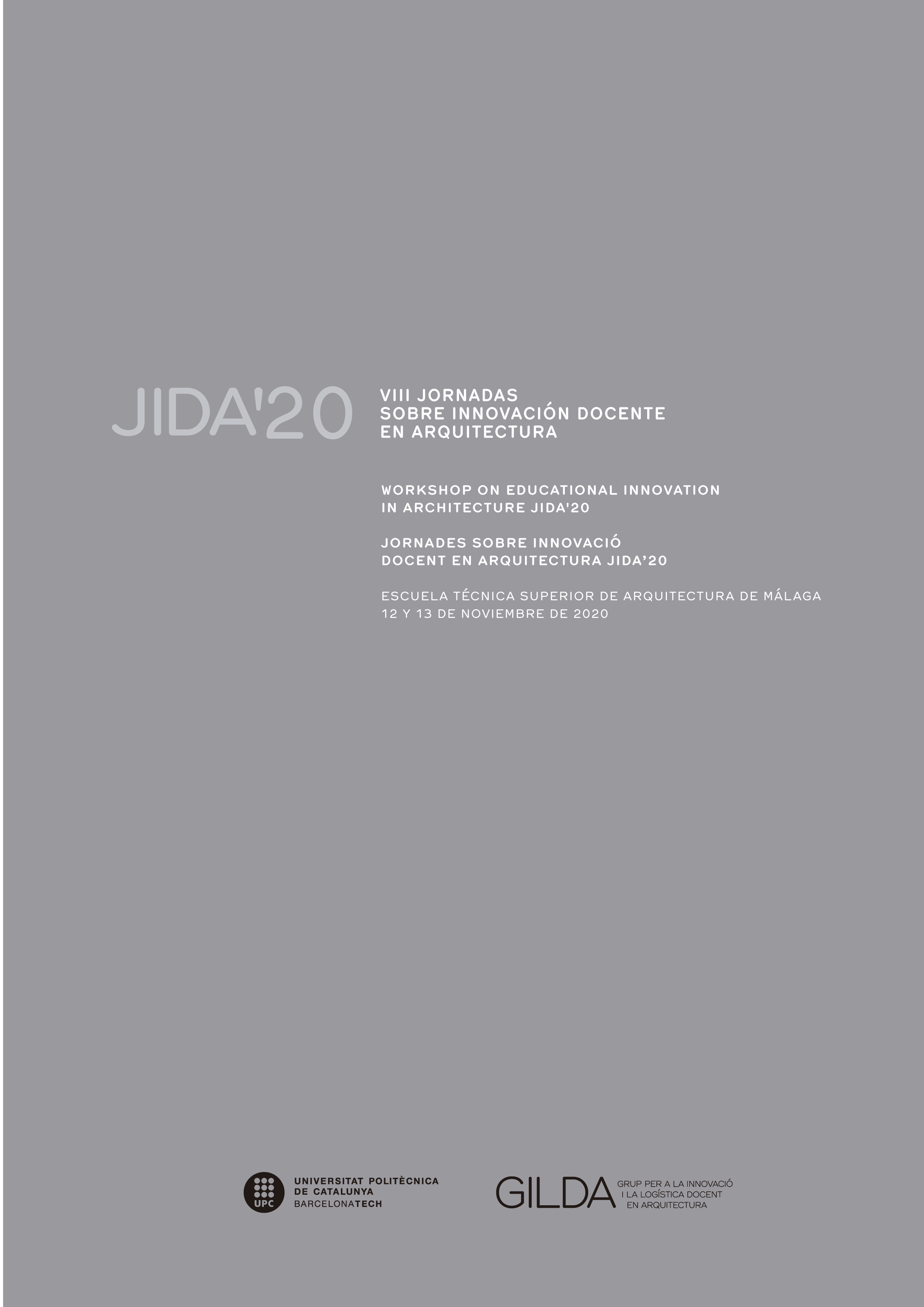camp_us: co-designing university and city. Pamplona 2020
DOI:
https://doi.org/10.5821/jida.2020.9439Abstract
The camp_us project explores new links for a rich coexistence, cultural activity, participation and citizen integration between the campus of the University of Navarra and the city of Pamplona, through a systemic and holistic design process. To this end, student teams follow the Design Thinking process, in order to explore, study and identify insights and opportunities for improvement, exploring three interconnected work fields: space, connections and time. The development of these proposals will include in the design process the active participation of the most relevant agents and users of the ecosystem, making them co-participants in the approaches, achiving integrated, inclusive and coherent solutions to the current needs, at a local and global level. This article is presented as a further step in the journey towards learning more resilient design processes.
References
ACILU, A.; LARRIPA, A.; FASSI, D.; GALLUZZO, L. (2019). “Living(Market)Lab: aprendizaje servicios en los mercados†en 8º Encuentro BID_Enseñanza y Diseño. Bienal Iberoamericana de Diseño, Madrid: Fundación Diseño. 227-234
BOSCH, R. (2018). Design for a better world starts at school. Copenhagen: Rosan Bosch Studio. 15-16
CARRASCO, J.; ABELLÃN, A.; AMORÓS, V. (2014). “De lo doméstico a la participación social: prácticas socio-arquitectonicas en la Escuela de Alicante†en GarcÃa-Escudero, D., Bardà i Milà , B. JIDA´14. II Jornadas sobre Innovación Docente en Arquitectura. Barcelona: Iniciativa Digital Politècnica Oficina de Publicacions Acadèmiques Digitals de la UPC. 23-33
MANZINI, E. (2007). “Design Research for Sustainable Social innovation†en MICHEL, Ralf. (Ed). Design Research Now. Board if International Research in Design. Basel:Birkhäuser Verlag AG. 233-234
MONCLÚS, J.; BAMBÓ NAYA, R.; DE LA CAL NICOLÃS, P.; GARCÃA-PÉREZ, S. (2017). “Cuatro años de talleres de regeneración urbana: el aula proyectada en la ciudad†en GarcÃa-Escudero, D., Bardà i Milà , B. JIDA´17. V Jornadas sobre Innovación Docente en Arquitectura. Barcelona: Iniciativa Digital Politècnica Oficina de Publicacions Acadèmiques Digitals de la UPC. 273-286
MUNTAÑOLA, J. (2003). “Prologo†en Saura i Carulla, C. Arquitectonics. Mind, Land & Society, Barcelona: Ediciones UPC. 3
NESSLER, D. (2016). How to apply a design thinking, HCD, UX or any type of process from scratch. Medium. <https://medium.com/digital-experience-design/how-to-apply-a-design-thinking-hcd-ux-or-any-creative-process-from-scratch-b8786efbf812> [Consulta: 17 de Septiembre de 2020]
POLAINE, A.; LAVRANS, L.; REASON, B.; (2013). Service Design. From Insight to imoplementation. NY:Rosenfeld. 18
PORTALÉS MAÑANOS, A.; SOSA ESPINOSA, A.; PALOMARES FIGUERES, M. (2019). “Dinámicas participativas y multidisciplinariedad en proyectos docentes de regeneración urbana†en GarcÃa-Escudero, D., Bardà i Milà , B. JIDA´19. VII Jornadas sobre Innovación Docente en Arquitectura. Barcelona: Iniciativa Digital Politècnica Oficina de Publicacions Acadèmiques Digitals de la UPC. 583-596
REUS, P. y BLANCAFORT, J. (2017). “EmpatÃa, colaboración y dosis de realidad en la enseñaza del proyecto arquitectónico†en GarcÃa-Escudero, D., Bardà i Milà , B. JIDA´17. V Jornadas sobre Innovación Docente en Arquitectura. Barcelona: Iniciativa Digital Politècnica Oficina de Publicacions Acadèmiques Digitals de la UPC. 339-351
SCHUMACHER, E. F. (2011). Lo pequeño es hermoso. Madrid: AKAL. 5-6
SENNETT, R. (2010). El artesano. Barcelona: Anagrama, 13
STICKDORN, M.; HORNESS, M.; LAWRENCE, A.; SCHNEIDER, J.; (2018). This is Service Design Doing. Sebastopol: O´Really Media.
STICKDORN, M.; SCHNEIDER, J.; (2017). This is Service Design Thinking. Amsterdam: BIS.
THACKARA, J. (2013). “Foreword†en Polaine, A., Lavrans, L., Reason, B. Service Design. From Insight to imoplementation. NY: Rosenfeld, NY. xiii
VEZZOLI, C. (2018). “Design for Sustainability: An Intorduction†en VV. AA. Designing Sustainable Energy for All Sustainable Product-Service System Design Applied to Distributed Renewable Energy. Cham:Springer. 114-115






















